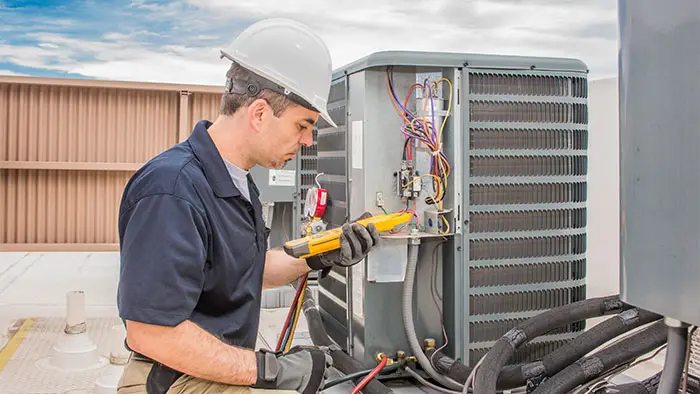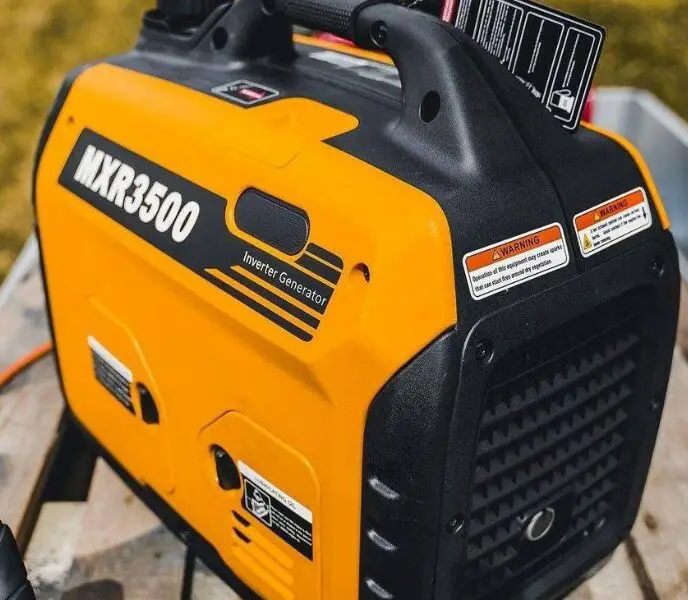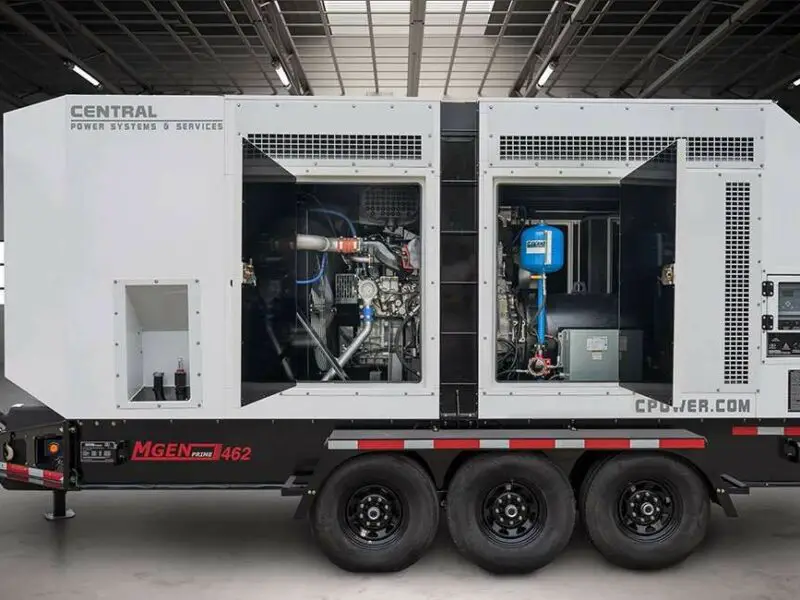
- Overview of Hazardous Waste Generator Categories and Regulatory Requirements
- Summary of Hazardous Waste Generator Regulations by the US EPA
- Definitions for Generator Regulations
- Labeling and Management Standards for Containers of Unwanted Material in the Laboratory
- Purpose and Implementation of Contingency Plan for Large Quantity Generators
- Re-notification Requirement for Small Quantity Generators
- Hazardous Waste Determination and Recordkeeping
- Satellite Accumulation Area Regulations for Small and Large Quantity Generators
- EPA Identification Numbers and Re-notification for Generators
- Manifest Tracking Numbers, Printing, and Obtaining Manifests
- Use of the Manifest, Electronic Manifest, and Waste Minimization Certification
- Packaging, Labeling, Marking, and Placarding Requirements
- Recordkeeping and Reporting for Small and Large Quantity Generators
- Farmers’ Regulations Related to Hazardous Waste Management
- Safety Standards and Regulations for Using Portable Generators
- Conclusion
- FAQs
Did you know that improper management of hazardous wastes can have severe consequences for human health and the environment? Recycling and disposing of hazardous wastes at a proper facility is crucial to prevent the release of incompatible wastes into the environment. That’s why generator regulations play a crucial role in ensuring safe and responsible waste disposal. These regulations, developed over time, aim to prevent pollution, protect public health, and promote sustainable practices in waste management.
Generator regulations provide a framework for the proper identification, documentation, treatment, transportation, and disposal of hazardous waste for both large quantity generators and small quantity generators. These regulations also address the recycling of hazardous waste and the management of incompatible wastes. They establish clear instructions on how to handle waste materials safely at each stage – from generation to final disposal. By following these guidelines, businesses and individuals can effectively prevent harm to themselves, others, and the environment.
We’ll explore their historical development as well as their impact on waste management practices today. So if you’re looking for additional information about generator regulations or want to understand how they contribute to a cleaner and healthier world, stay tuned!
Overview of Hazardous Waste Generator Categories and Regulatory Requirements
Applicability of Generator Regulations
Entities subject to generator regulations include businesses, industries, and facilities that generate hazardous waste. The criteria for determining whether an entity is considered a small or large quantity generator depend on the amount of hazardous waste produced in a month. Small quantity generators typically produce less than 220 pounds (100 kilograms) of hazardous waste per month, while large quantity generators produce more than this threshold.
Small and large quantity generators have different regulatory requirements to ensure the proper management and disposal of hazardous waste. Small quantity generators have fewer obligations compared to their larger counterparts. However, it’s important to note that even small quantity generators must follow certain rules to prevent environmental harm.
Conditions for Exemption for Small Quantity Generators
Small quantity generators may be exempt from certain regulatory requirements under specific conditions. These exemptions can be found in the subpart of the regulations that pertain to disposal facility equipment. These exemptions are designed to alleviate some burdens on smaller businesses while still maintaining environmental protection standards. However, exemption status comes with limitations and responsibilities.
For example, if a small quantity generator accumulates less than 2,200 pounds (1,000 kilograms) of hazardous waste onsite at any given time, they may be exempt from obtaining a permit for storage. They may be exempt from certain recordkeeping requirements if they ship their hazardous waste off-site within 180 days.
It’s crucial for small quantity generators to understand the specific exemptions available to them and ensure compliance with all other applicable regulations.
Manifest Requirements for Small and Large Quantity Generators
The manifest system plays a vital role in tracking the transportation and disposal of hazardous waste generated by both small and large quantity generators. A manifest is a document that accompanies each shipment of hazardous waste from its point of generation to its final destination.
Both small and large quantity generators must complete manifests accurately to ensure proper handling and disposal of their hazardous waste. This includes providing detailed information about the type and quantity of waste being shipped, as well as the destination facility.
Accurate completion of manifests and diligent recordkeeping is essential for regulatory compliance. It helps authorities track the movement of hazardous waste, ensuring that it is managed safely and disposed of properly.
Summary of Hazardous Waste Generator Regulations by the US EPA
Definitions for Generator Regulations
To understand and comply with generator regulations, it’s essential to grasp key terms like hazardous waste, container, and satellite accumulation area. These definitions impact compliance as they determine how waste should be managed and handled. By understanding these definitions, you can ensure that you’re following proper waste management practices.
Labeling and Management Standards for Containers of Unwanted Material in the Laboratory
Proper labeling is crucial. It helps identify the contents and ensures safe handling. Management standards play a vital role in storage, handling, and disposal procedures within the laboratory setting. Adhering to these standards prevents accidents or environmental contamination.
Purpose and Implementation of Contingency Plan for Large Quantity Generators
Large quantity generators must have a contingency plan in place to address potential emergencies involving hazardous waste at their disposal facilities. This plan should cover disposal operations and ensure proper handling of wastes during an emergency. These plans are necessary as they outline steps to be taken during incidents like spills or leaks. Key elements such as emergency contact information, evacuation procedures, and spill response protocols should be included in the contingency plan.
Re-notification Requirement for Small Quantity Generators
Small quantity generators need to be aware of the re-notification requirement. This means that they must inform regulatory authorities about their status periodically. Timely and accurate re-notification is crucial to maintain compliance with generator regulations.
Hazardous Waste Determination and Recordkeeping
Properly determining whether a waste is hazardous or not is an important step in complying with generator regulations. It involves identifying, classifying, and characterizing the waste correctly. Maintaining accurate records is crucial for demonstrating compliance with hazardous waste regulations.
Satellite Accumulation Area Regulations for Small and Large Quantity Generators
Satellite accumulation areas (SAAs) serve as temporary storage locations for hazardous waste before it’s transported off-site. Understanding regulatory requirements related to SAAs is essential to prevent environmental contamination or safety hazards. These requirements include storage limits, labeling, and regular inspections.
EPA Identification Numbers and Re-notification for Generators
Generators must obtain an EPA identification number to ensure proper tracking of hazardous waste. Re-notification is also required in certain situations, such as changes in generator status or waste streams related to disposal, hazardous wastes, and recovery requirements. Understanding the process for obtaining an EPA identification number and when re-notification is necessary is crucial for compliance.
Manifest Tracking Numbers, Printing, and Obtaining Manifests
Manifest tracking numbers are assigned to each shipment of hazardous waste to track its movement from the generator to the disposal facility. Generators need to understand how these numbers are assigned and printed on manifests. Knowing how to obtain manifests for hazardous waste disposal from authorized sources ensures proper documentation and information throughout the waste management process, meeting all necessary requirements.
Use of the Manifest, Electronic Manifest, and Waste Minimization Certification
The use of paper manifests allows generators to track shipments of hazardous waste. However, electronic manifest options are also available for more streamlined tracking processes. Waste minimization certification demonstrates a commitment to reducing the generation of hazardous waste.
Packaging, Labeling, Marking, and Placarding Requirements
Proper packaging is vital during shipment to prevent leaks or spills of hazardous wastes that could harm people or the environment. The transporter must ensure that the container is secure and properly sealed. Labels on containers help identify the contents and provide important information for safe handling. Marking requirements ensure clear identification of packages containing hazardous waste while placarding requirements apply to vehicles transporting such waste.
Recordkeeping and Reporting for Small and Large Quantity Generators
Maintaining accurate records is crucial for demonstrating compliance with generator regulations. Both small and large quantity generators have specific recordkeeping requirements that must be followed. Reporting obligations may include submitting annual reports detailing their hazardous waste activities.
Farmers’ Regulations Related to Hazardous Waste Management
Farmers also need to adhere to generator regulations. Specific regulations and exemptions exist for agricultural activities, and it’s important for farmers to understand and implement proper hazardous waste management practices.
Safety Standards and Regulations for Using Portable Generators
Explanation on safety standards related to using portable generators
Safety should always be the top priority. These powerful machines can provide electricity during power outages or in remote locations, but they also pose certain risks if not used properly. That’s why there are specific safety standards in place to ensure the safe operation of portable generators.
One of the key safety considerations is ventilation. Portable generators emit carbon monoxide, a colorless and odorless gas that can be extremely dangerous if inhaled in high concentrations. Therefore, it is essential to operate these generators in well-ventilated areas to prevent the buildup of carbon monoxide.
Discussion on regulatory requirements regarding ventilation, fuel storage, grounding, etc.
In addition to ventilation, there are several other regulatory requirements that must be followed when using portable generators. These regulations aim to minimize the risk of accidents and ensure the safety of both operators and those nearby.
Fuel storage is an important aspect that needs attention. It is crucial to store fuel for portable generators safely and securely, away from any potential ignition sources such as open flames or sparks. Proper grounding is also necessary to prevent electrical shocks or fires caused by electrical faults.
To comply with occupational safety standards, it is essential to use appropriate extension cords that are designed for outdoor use and have sufficient capacity for the generator’s power output. This helps prevent overloading and reduces the risk of electrical hazards.
Importance of following safety guidelines when operating portable generators
Following safety guidelines when operating portable generators is vital because it can save lives and prevent accidents. Carbon monoxide poisoning from generator exhaust has been responsible for numerous fatalities and injuries over the years.
By adhering to proper ventilation practices, individuals can significantly reduce their exposure to this deadly gas. Ensuring adequate distance between the generator and living spaces further minimizes risks.
Moreover, understanding and complying with regulatory requirements regarding fuel storage, grounding, and the use of appropriate extension cords enhance overall safety. These measures help prevent electrical accidents and reduce the risk of fires or electrocution.
Conclusion
Congratulations! You’ve reached the end of this article on generator regulations. We’ve covered the various hazardous waste generator categories and the regulatory requirements set by the US EPA. We’ve also discussed the safety standards and regulations for using portable generators.
Now that you have a better understanding of these regulations, it’s important to ensure compliance to protect both yourself and the environment. Make sure to familiarize yourself with the specific requirements for your generator category and follow them diligently. Regular inspections of the laboratory facility, proper labeling of hazardous wastes, and appropriate storage in containers are key to maintaining a safe working environment.
Remember, staying informed about generator regulations is an ongoing process. Keep up with any updates or changes in the regulations to ensure that you are always in compliance. By doing so, you not only avoid penalties but also contribute to a safer and cleaner environment.
Thank you for reading! If you have any further questions or need additional information, don’t hesitate to reach out. Stay safe and happy generating!
FAQs
How are generators regulated?
Generators are regulated by various government agencies, such as the Environmental Protection Agency (EPA) and Occupational Safety and Health Administration (OSHA). These regulations ensure that generators meet specific standards for emissions, noise levels, and safety precautions.
Are there specific regulations for residential generators?
Yes, there are regulations for residential generators. The EPA has guidelines on emissions limits for small engines used in residential generators. It’s important to check with your local authorities or consult a professional to ensure compliance with these regulations.
What safety measures should I take when using a generator?
When using a generator, it’s crucial to follow safety guidelines. Keep the generator outdoors in a well-ventilated area, away from windows or doors. Never operate it in an enclosed space due to the risk of carbon monoxide poisoning. Always read and follow the manufacturer’s instructions for safe operation.
Do I need a permit to install a generator?
The requirement for a permit to install a generator varies depending on your location and the type of generator. In some areas, you may need to obtain permits from local building or zoning departments before installation. It’s advisable to contact your local authorities or consult with an electrician to determine if you need a permit.
Can I connect my generator directly to my home’s electrical system?
Connecting a generator directly to your home’s electrical system without proper equipment can be extremely dangerous. It can pose risks not only to yourself but also utility workers trying to restore power after an outage. To ensure safe operation, consult with a licensed electrician who can install appropriate transfer switches or interlock devices for seamless integration with your home’s electrical system.




